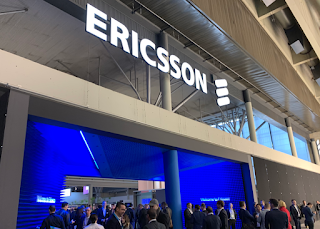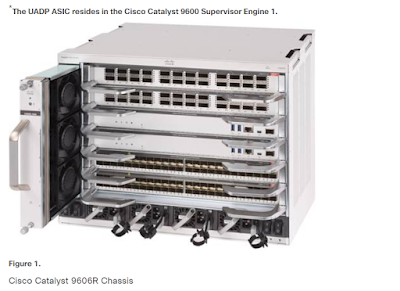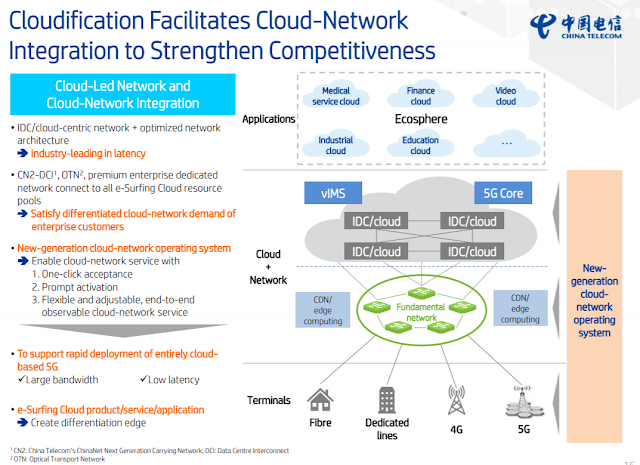Dell Technologies introduced an SD-WAN Edge powered by VMware.
 The Dell EMC SD-WAN Edge is an integrated platform that bundles VMware SD-WAN by VeloCloud software as a subscription with Dell EMC hardware and a single support number.
The Dell EMC SD-WAN Edge is an integrated platform that bundles VMware SD-WAN by VeloCloud software as a subscription with Dell EMC hardware and a single support number.
Dell Technologies Consulting Services also is debuting three new services for customers adopting SD-WAN technologies: Advisory, Design and Implementation.
Dell Technologies said its sales and customer support force can help customers plan, customize and properly scale their SD-WAN for successful deployment and management of modernized virtual network functions.
The service is expected to be available in July 2019.
 The Dell EMC SD-WAN Edge is an integrated platform that bundles VMware SD-WAN by VeloCloud software as a subscription with Dell EMC hardware and a single support number.
The Dell EMC SD-WAN Edge is an integrated platform that bundles VMware SD-WAN by VeloCloud software as a subscription with Dell EMC hardware and a single support number.Dell Technologies Consulting Services also is debuting three new services for customers adopting SD-WAN technologies: Advisory, Design and Implementation.
Dell Technologies said its sales and customer support force can help customers plan, customize and properly scale their SD-WAN for successful deployment and management of modernized virtual network functions.
The service is expected to be available in July 2019.
VMware to acquire VeloCloud for SD-WAN
VMware agreed to acquire VeloCloud Networks, a start-up offering SD-WAN technology for enterprises and service providers. Financial terms were not disclosed.
VeloCloud, which is based in Mountain View, California, says its SD-WAN solution is distinguished by supporting data plane services in the cloud, in addition to on-premise deployments; enabling policy-based access to cloud and data center applications. VeloCloud SD-WAN includes: a choice of public, private or hybrid cloud network for enterprise-grade connection to cloud and enterprise applications; branch office enterprise appliances and optional data center appliances; software-defined control and automation; and virtual services delivery. The solution aggregates multiple access lines (cable modem, DSL, LTE) into a single secure connection that is defined and controlled in the cloud.
VeloCloud was founded in 2013. The company is headed by Sanjay Uppal, who previously ran OnMobile Global. He also spent time at Citrix through the acquisition he negotiated with Caymas where he was President and CEO. At Citrix, he defined the product strategy and go to market for the Access Management, Delivery Controller and WAN acceleration product lines. VeloCloud co-founders also include Ajit Mayya (previously Sr. Director of Engineering in the Cloud and Infrastructure Management division of VMware) and Steve Woo (previously head of cloud strategy at Aerohive Networks).
VMware said the VeloCloud acquisition will enable it to build on the success of its NSX network virtualization platform to address end-to-end automation, application continuity, branch transformation and security from data center to cloud to edge.
 "In the digital era, a new networking approach is required to solve the hyper distribution of applications and data, as we move from a model of data centers to one of centers of data at the edge," said Pat Gelsinger, chief executive officer, VMware. "At the heart of VMware's networking strategy is the belief in delivering pervasive connectivity with embedded security that connects users to applications wherever they may be. With the addition of VeloCloud's industry-leading SD-WAN technology, we will be able to extend the VMware NSX approach of automated, secure, and infrastructure-independent networking to the WAN."
"In the digital era, a new networking approach is required to solve the hyper distribution of applications and data, as we move from a model of data centers to one of centers of data at the edge," said Pat Gelsinger, chief executive officer, VMware. "At the heart of VMware's networking strategy is the belief in delivering pervasive connectivity with embedded security that connects users to applications wherever they may be. With the addition of VeloCloud's industry-leading SD-WAN technology, we will be able to extend the VMware NSX approach of automated, secure, and infrastructure-independent networking to the WAN."
"Enterprises are transforming how they architect and utilize their infrastructure, with a shift towards a cloud-delivered, software-defined model. This enables organizations to have a globally consistent infrastructure regardless of where it is deployed -- from the data center and the cloud to the edge," said Sanjay Uppal, CEO of VeloCloud Networks. "We look forward to helping VMware, the leader in software-defined infrastructure, in the next evolution of the company's networking and NFV strategies."
VeloCloud, which is based in Mountain View, California, says its SD-WAN solution is distinguished by supporting data plane services in the cloud, in addition to on-premise deployments; enabling policy-based access to cloud and data center applications. VeloCloud SD-WAN includes: a choice of public, private or hybrid cloud network for enterprise-grade connection to cloud and enterprise applications; branch office enterprise appliances and optional data center appliances; software-defined control and automation; and virtual services delivery. The solution aggregates multiple access lines (cable modem, DSL, LTE) into a single secure connection that is defined and controlled in the cloud.
VeloCloud was founded in 2013. The company is headed by Sanjay Uppal, who previously ran OnMobile Global. He also spent time at Citrix through the acquisition he negotiated with Caymas where he was President and CEO. At Citrix, he defined the product strategy and go to market for the Access Management, Delivery Controller and WAN acceleration product lines. VeloCloud co-founders also include Ajit Mayya (previously Sr. Director of Engineering in the Cloud and Infrastructure Management division of VMware) and Steve Woo (previously head of cloud strategy at Aerohive Networks).
VMware said the VeloCloud acquisition will enable it to build on the success of its NSX network virtualization platform to address end-to-end automation, application continuity, branch transformation and security from data center to cloud to edge.
 "In the digital era, a new networking approach is required to solve the hyper distribution of applications and data, as we move from a model of data centers to one of centers of data at the edge," said Pat Gelsinger, chief executive officer, VMware. "At the heart of VMware's networking strategy is the belief in delivering pervasive connectivity with embedded security that connects users to applications wherever they may be. With the addition of VeloCloud's industry-leading SD-WAN technology, we will be able to extend the VMware NSX approach of automated, secure, and infrastructure-independent networking to the WAN."
"In the digital era, a new networking approach is required to solve the hyper distribution of applications and data, as we move from a model of data centers to one of centers of data at the edge," said Pat Gelsinger, chief executive officer, VMware. "At the heart of VMware's networking strategy is the belief in delivering pervasive connectivity with embedded security that connects users to applications wherever they may be. With the addition of VeloCloud's industry-leading SD-WAN technology, we will be able to extend the VMware NSX approach of automated, secure, and infrastructure-independent networking to the WAN.""Enterprises are transforming how they architect and utilize their infrastructure, with a shift towards a cloud-delivered, software-defined model. This enables organizations to have a globally consistent infrastructure regardless of where it is deployed -- from the data center and the cloud to the edge," said Sanjay Uppal, CEO of VeloCloud Networks. "We look forward to helping VMware, the leader in software-defined infrastructure, in the next evolution of the company's networking and NFV strategies."
- In March, VeloCloud closed a $35 million Series D round of funding for its SD-WAN solutions. The funding was led by Hermes Growth Partners and included new investors Telstra Ventures and Khazanah Nasional Berhad, the strategic investment fund of the Government of Malaysia (“Khazanah”), in addition to existing investors New Enterprise Associates (NEA), Venrock, March Capital Partners, Cisco Investments, and other undisclosed strategic investors. This brings total funding to $84 million.
- In March 2017, VeloCloud reported that its number of SD-WAN sites has grown to more than 50,000 and total customer wins exceed 600, including the two largest SD-WAN wins in the world. The company has secured deals from AT&T, Sprint, Mitel, TelePacific, and Windstream for its “VeloCloud Cloud-Delivered SD-WAN for Service Providers” solution for both Network Integrated and Over The Top implementations.
























































